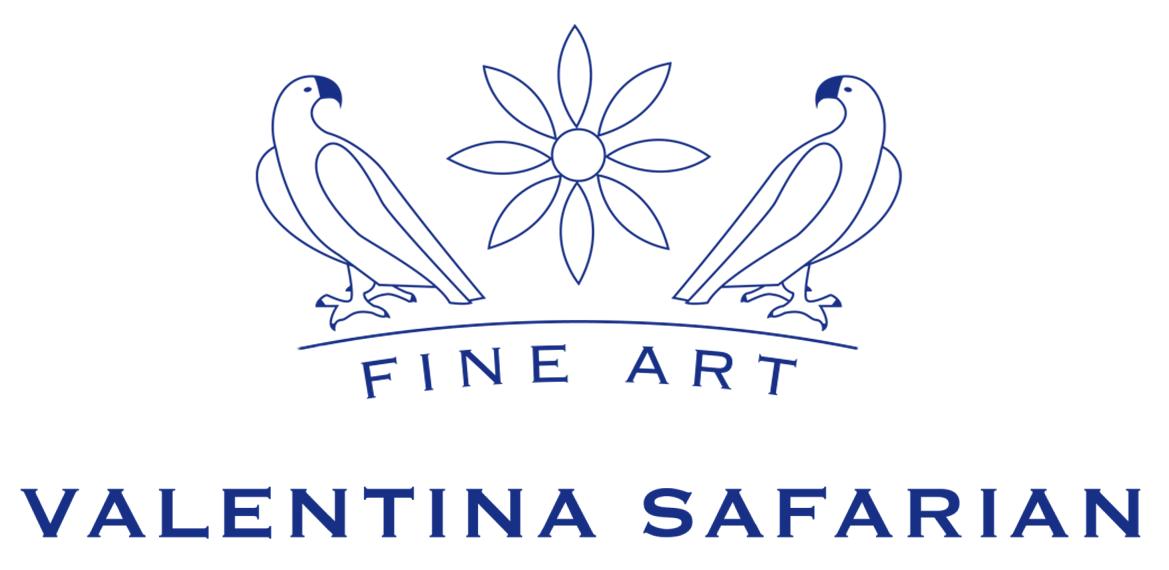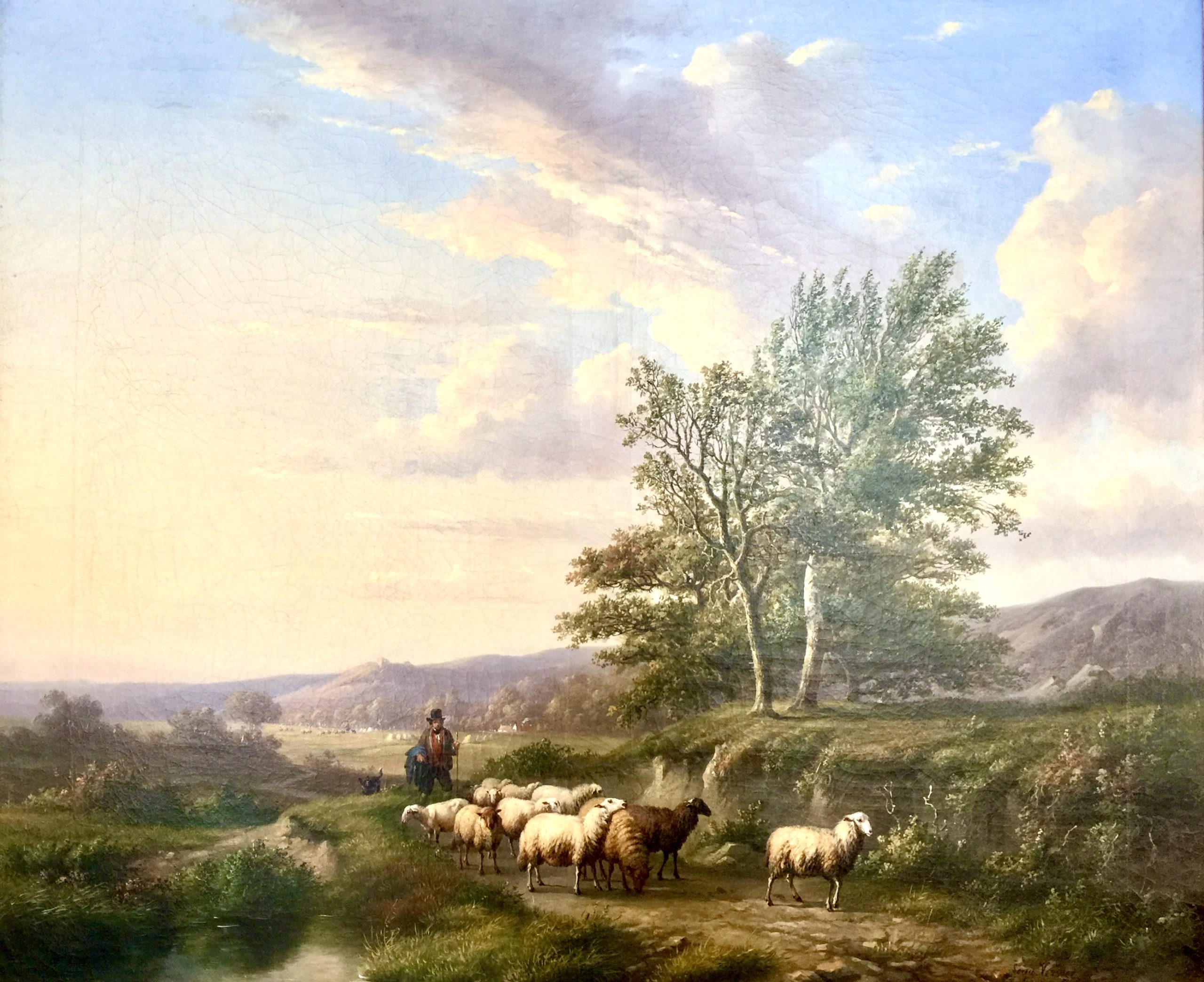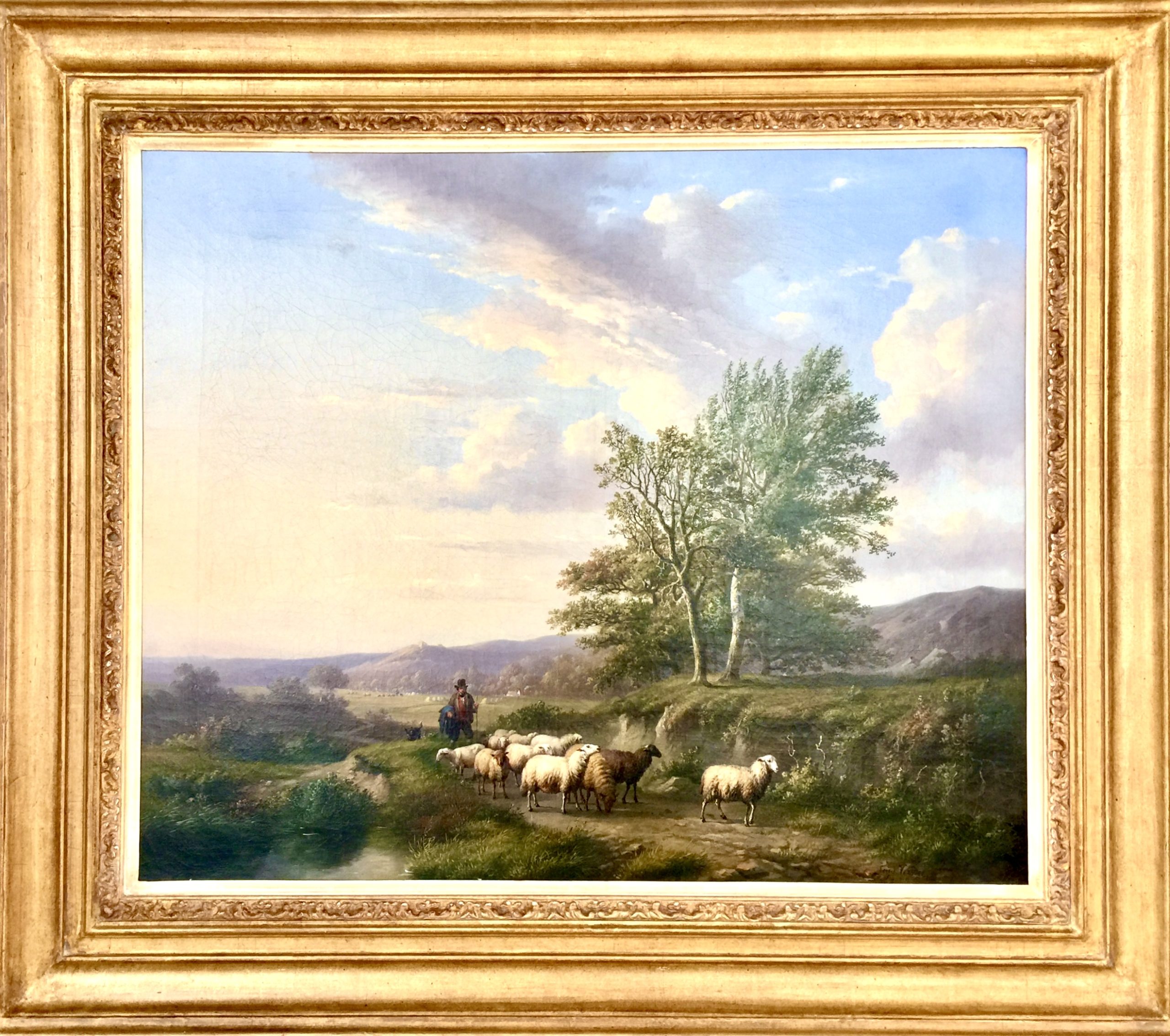Belgian Painters, Romantic School
Verboeckhoven Eugène Joseph
Warneton 1798 – 1881 Brussels
Verwee Louis Pierre
Courtrai 1807 – 1877 Brussels
+32 478 22 65 64 | info@valentinasafarian.com
Verboeckhoven Eugène Joseph
Verwée Louis-Pierre
Belgian Painters, Romantic School
Verboeckhoven Eugène Joseph
Warneton 1798 – 1881 Brussels
Verwee Louis Pierre
Courtrai 1807 – 1877 Brussels
Signature: signed by both artists lower right
Medium: oil on canvas
Dimensions: image size 60,50 x 72,5 cm, frame size 85 x 97 cm
Eugène Joseph Verboeckhoven, a multifaceted Belgian artist born on June 9, 1798, in Warneton, West Flanders, left an indelible mark on the art world through his prowess as a painter, sculptor, etcher, engraver, and lithographer. His oeuvre primarily focused on animals, animated landscapes, and portraits, earning him acclaim and recognition throughout his lifetime and beyond.
Born into an artistic milieu, Verboeckhoven began his artistic journey under the tutelage of his father, Barthélemy Verboeckhoven, himself a sculptor. Early exposure to the world of art laid the foundation for Verboeckhoven’s future accomplishments. He further honed his skills under the guidance of Voituron in Ghent in 1816, setting the stage for a prolific career ahead.
The salons of the early 19th century provided Verboeckhoven with a platform to showcase his talent, and he became a regular participant at prestigious venues such as the Ghent and Brussels Salons. His artistic pursuits took him on journeys across Europe, including visits to the Ardennes, France, Great Britain, Germany, and Italy, where he drew inspiration from diverse landscapes and cultures.
Verboeckhoven’s mastery lay in his ability to capture the essence of nature with meticulous detail and studied composition. He upheld a tradition rooted in the 17th century, emphasizing the observation of nature and the idealized reproduction of reality. Like the Old Masters before him, Verboeckhoven employed traditional techniques such as grinding lapis lazuli for his skies, demonstrating a commitment to craftsmanship and authenticity.
Beyond his role as a painter, Verboeckhoven excelled in other artistic endeavors, including sculpture, etching, engraving, and lithography. His versatility as an artist was matched only by his dedication to his craft, evident in the hundreds of sketches and studies he produced during his lifetime.
Verboeckhoven’s influence extended beyond his own creations, as many artists sought his expertise to enhance their own works with his signature animals and figures. His meticulous preparation and attention to detail set him apart as a consummate artist and a master of his craft.
He was asked to decorate the paintings of an artists such as Jean-Baptiste De Jonghe, Pierre François De Noter, Barend Koekkoek, Edouard Delvaux, Alexander Joseph Daiwaille, Frans Kheelhoff, François Verheyden. Louis-Pierre Verwée and the brothers Charles and Edmond Tschaggeny were his followers.
In addition to his artistic achievements, Verboeckhoven was a respected member of various academies and received numerous honors and accolades throughout his lifetime. Painter died in Schaerbeek. His patriotic services during the Belgian Revolution of 1830 earned him the Croix de Guerre, and he was buried with military honors upon his passing on January 19, 1881.
Eugène Joseph Verboeckhoven’s legacy endures through his timeless artworks, which continue to captivate audiences with their beauty, precision, and depth. As a pioneer of animal painting and a stalwart of artistic tradition, Verboeckhoven remains a celebrated figure in the annals of art history.
Today, his paintings can be found worldwide in private and public collections, including in the Museums of Brussels, Leuven, Antwerp, Liège, Ghent, Courtrai, Lier, Turnhout, Verviers (Belgium), Luxemburg, Valenciennes (Spain), Amsterdam (The Netherlands), Paris (France), Detroit, New York (USA), Saint-Petersburg (Russia).
Louis Pierre Verwee was born on March 19, 1807 in Courtrai, Belgium. He was a painter of landscapes and animals. Louis-Pierre Verwée was the father of animal painter Alfred Verwée. He was a pupil at the Courtrai Art School and was mentored by Jean-Baptiste De Jonghe. He admired Verboeckhoven’s work and he managed to work at the studio of Verboeckhoven in Ghent and later in Brussels. The painters worked together for quite some time and several paintings were signed by both artists as a result. His early works are similar to those of his master Verboeckhoven, to the extent that it is often difficult to distinguish their work. Verboeckhoven sometimes painted the figures and animals in Verwee’s pictures. Verwée’s preferred subjects were winter and summer scenes, often filled in with figures and animals, painted by his master and friend Eugène Verboeckhoven. He participated in several exhibitions in Bruges, Ghent, Courtrai, Brussels and Paris. He was very successful. He travelled through France, Germany, Netherlands and Great Britain, where he stayed for a long time in London. Painter died in November, 1877 in Schaerbeek. Paintings by Verwée can be found in many public and private collections. His work is also represented in the Belgian State Museum in Brussels, Municipal Museum in Ypres, Musée des Beaux-Arts in Dijon, Museum of Antiquities and Decorative and Fine Arts in Courtrai, John Selbach Museum in Maaseik (landscape with animal representations by Eugène Verboeckhoven).
Zeedijk – Het Zoute 731, 8300 Knokke
Belgium
+32 478 22 65 64
info@valentinasafarian.com

© Copyright 2023 Valentina Safarian | Website by BEAUX SITES


